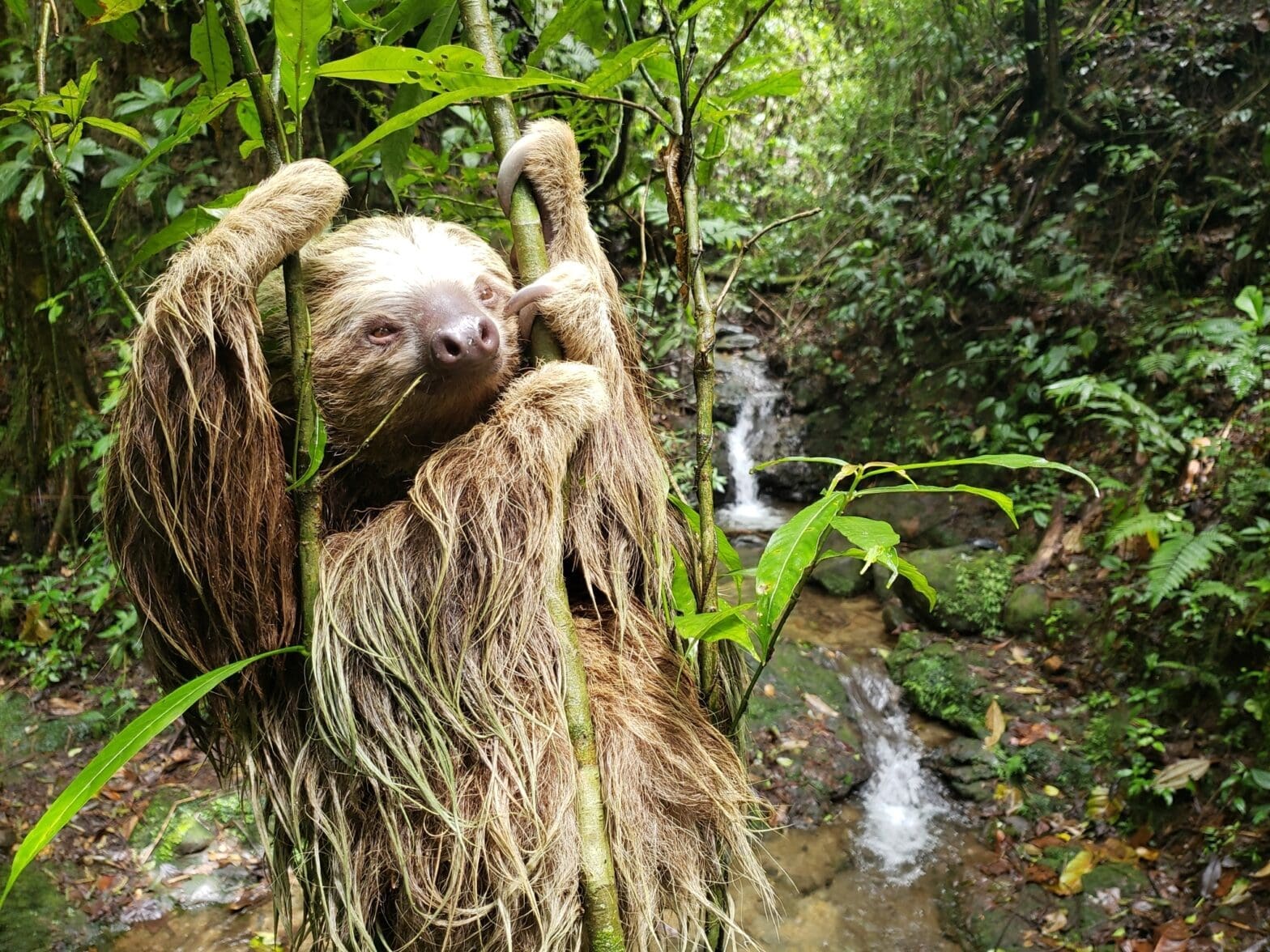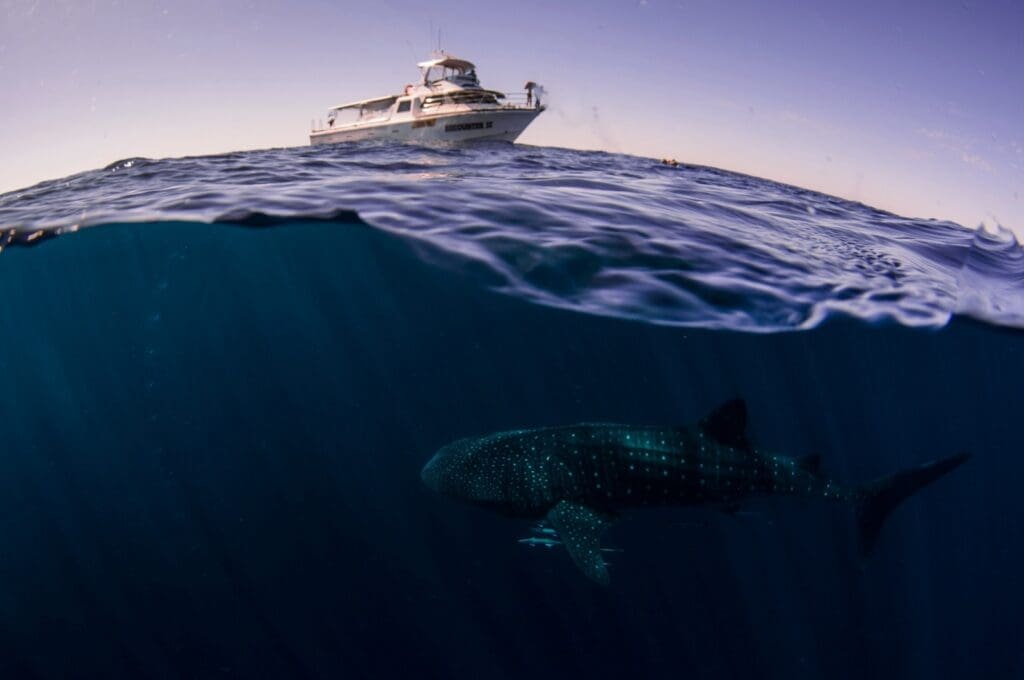What creature used to live on the ground but now hangs in trees, has hair that grows in the opposite direction than most mammals, and turns green because of the algae that thrives in their fur?
The Sloth! (Folivora)
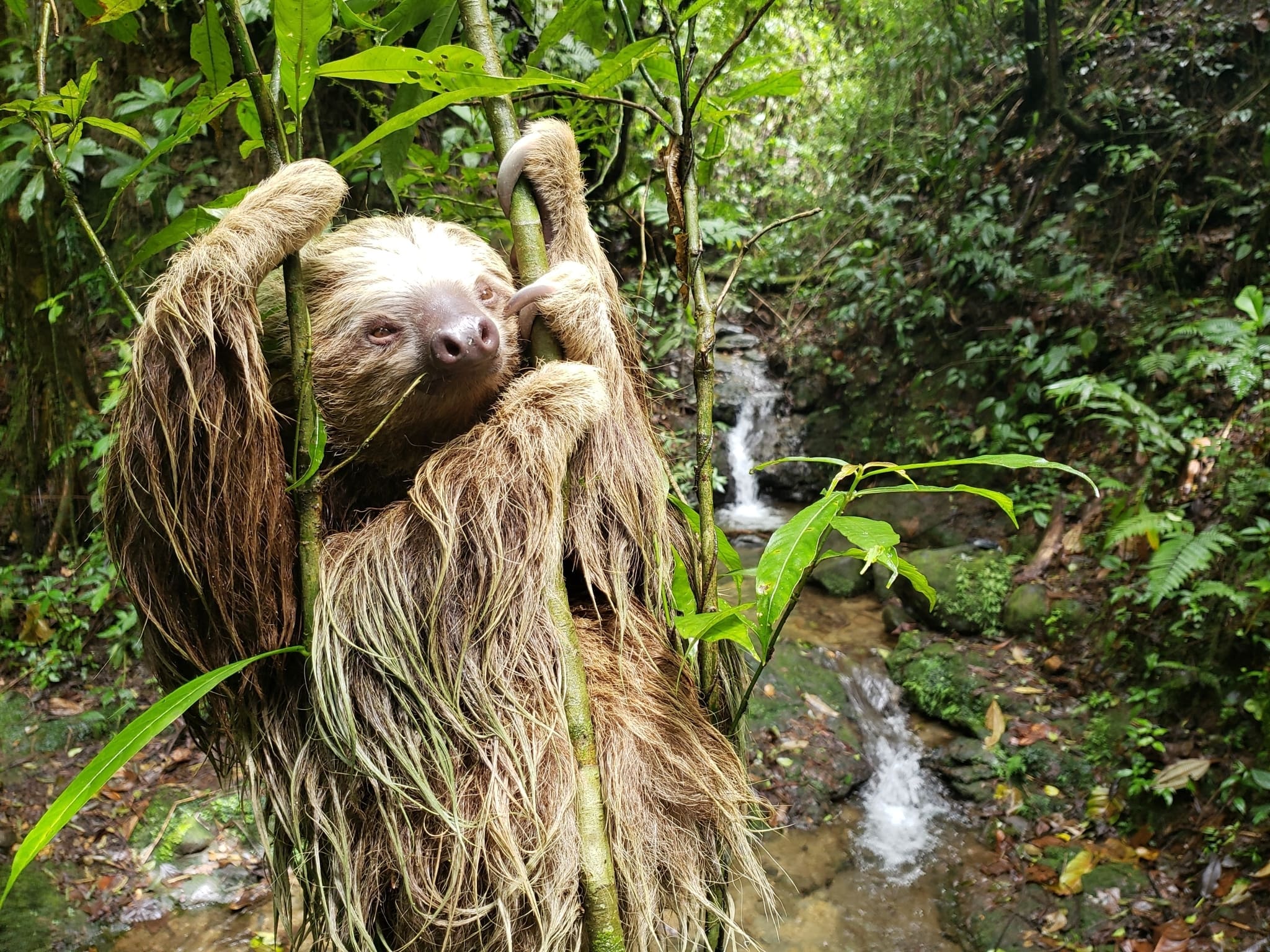
(Image Credit: Andrae Scholz via iNaturalist (CC-BY-NC))
Would you be surprised if I told you that sloths aren’t lazy, but slow and careful?
Sloths have been labeled as some of the laziest animals due to their slow movements and the (unfair and misguided) assumption that they sleep all day. This belief isn’t helped by the fact that the word sloth literally means “laziness,” as does its common name in many other languages. But as we’ll learn, there’s a lot more to this creature than meets the eye, and their chill, methodical nature is actually a quite ingenious survival mechanism.
The six surviving species of sloths are categorized into two groups: Bradypus, the three-toed sloths, and Choloepus, the two-toed sloths. Even with this naming, all sloths have three toes on their back limbs – whereas two-toed sloths only have two digits on their front limbs. Both groups descend from ancestors that were mostly terrestrial (meaning they lived on the ground) that existed about 28 million years ago. Some of them reached sizes rivaling those of elephants! The sizes of modern sloths vary, with three-toed sloths typically ranging from 60-80 cm in length (24-31 inches) and weighing between 3.6-7.7 kg (8-17 lbs), while two-toed sloths can be slightly larger, particularly in weight.
Found in the tropical rainforests of Central and South America, you can identify them by their rounded heads, tiny ears, and a facial structure that makes them look like they’re always smiling. They have stubby tails and long limbs ending in curved claws that, historically used for digging, now work with specialized tendons and a grip strength that is twice as strong as a humans to climb tree trunks and hang upside down from branches effortlessly. It is believed that over time, sloths evolved into a suspensory lifestyle to have easy access to plentiful food (mainly leaves), stay safe from predators (like jaguars and ocelots), and conserve energy.
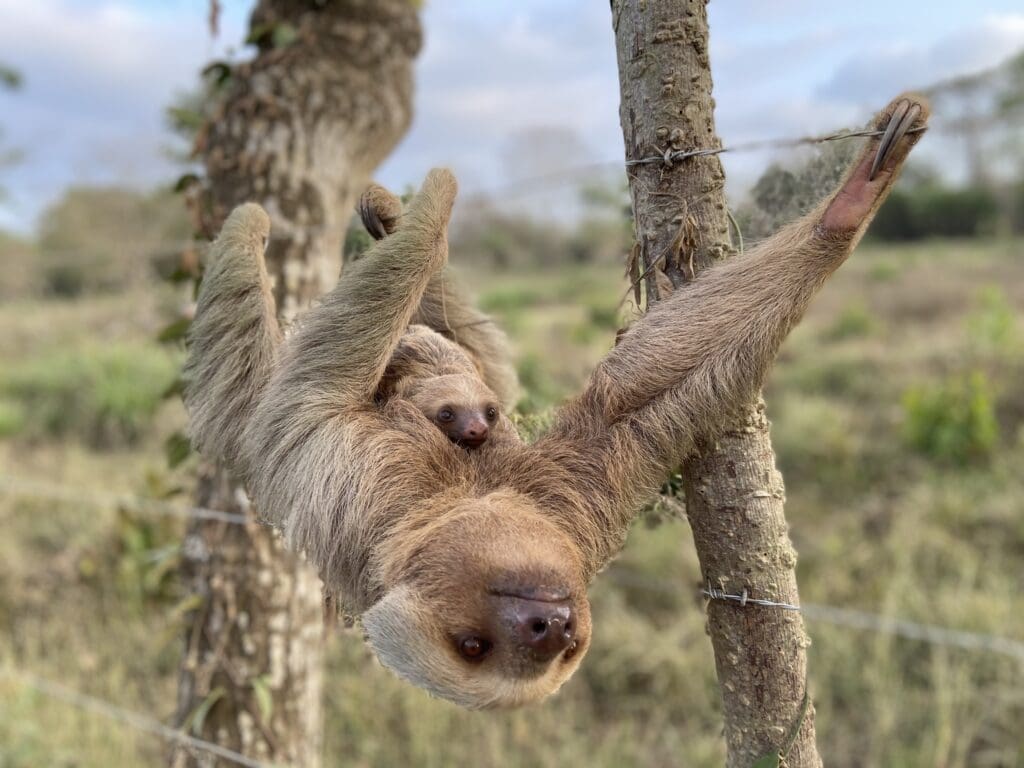
(Image Credit: Andrae Scholz via iNaturalist (CC-BY-NC))
Leafy Lunches
Sloths have a very low metabolism, meaning their bodies take quite a while to turn food into energy, thus the characteristically sluggish pace. Sloths move at about 4 yards per minute, and in an entire day, they may cover only around 120 feet, which is less than half the length of a football field. These languid movements are the reason why sloths can survive on a relatively low-energy diet, like leaves. While three-toed sloths are almost entirely herbivorous, two-toed sloths have an omnivorous diet that includes insects, fruits, and small lizards.
Even though leaves are the main food source for sloths, they provide very little nutrients and don’t digest easily. These lethargic tree-dwellers have large, slow-acting, multi-chambered stomachs that work for weeks to break down tough leaves. In fact, up to two thirds of a well-fed sloth’s body weight consists of the contents of its stomach. What other animals can digest in hours takes sloths days or weeks to process! Due to their slow digestion, sloths descend every week or so to defecate on the ground. Why exactly they do this is still a mystery to scientists, especially because sloths are at much more risk to predators on the ground.
Did you know that baby sloths learn what to eat by licking the lips of their mother?
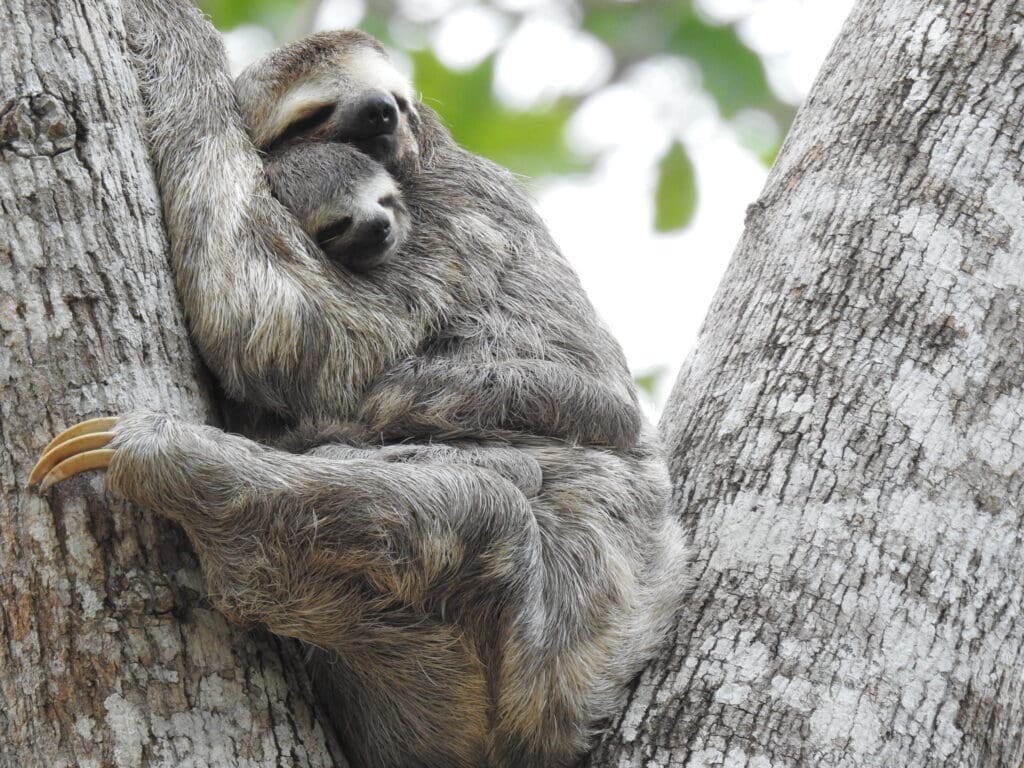
(Image Credit: Andrae Scholz via iNaturalist (CC-BY-NC))
Sloths, Moths, and Little Green Friends
Perhaps one of the most fascinating things about our slow-moving friends is what lives in their fur. Believe it or not, it’s a miniature world! Acting as a mobile home for a variety of different insect, fungi, and microbial species, sloths are, in fact, thriving ecosystems. But first, let’s set the scene.
Sloth fur grows in the opposite direction than it does on other animals. Normally, hair will grow towards the arms and legs, but because sloths spend so much of their lives upside down in the canopy with their limbs above their bodies (eating, sleeping, even giving birth hanging upside down), their fur grows away from their extremities and towards their bodies, giving them protection from the elements.
The layered and grooved structure of sloths’ shaggy coat is the perfect environment to host many species of commensal beetles, mites, moths, fungi, as well as a symbiotic green algae. While the sloths don’t directly consume and gain nutrients from the algae (legend held for many years that sloths were so lazy, they’d rather eat the algae off their back than search for food), its presence helps protect the sloths from predators by aiding in their camouflage, hiding them from predators like harpy eagles.
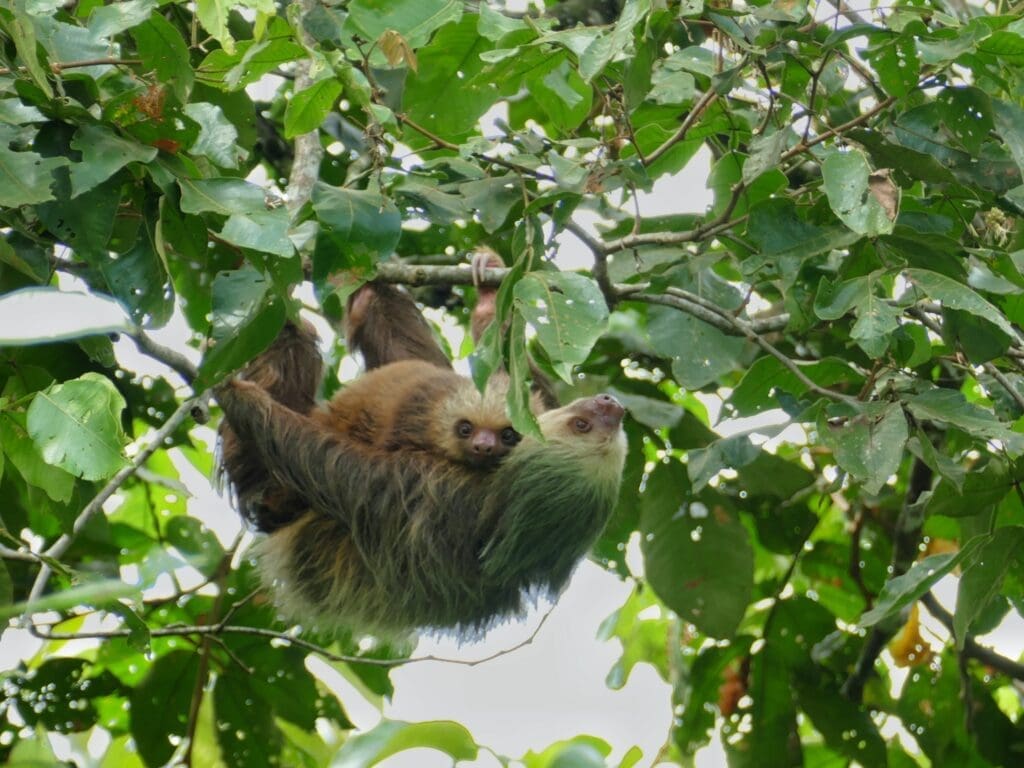
(Image Credit: Andrae Scholz via iNaturalist (CC-BY-NC))
A Slow but Important Presence in the Rainforest
Sloths are an integral part of tropical rainforest ecosystems. They regulate plant growth through their consumption of leaves, provide a unique habitat for smaller organisms like algae and moths in their fur, and contribute to nutrient cycling by depositing their feces on the forest floor, dispersing seeds and fertilizing new plant growth.
Some species of sloths are at risk because of deforestation, contact with electrical lines, and poaching and animal trafficking. The health of these creatures is wholly dependent on the health of the tropical rainforest. If their habitat begins to deteriorate, sloths are forced to live elsewhere in places that cannot support healthy populations.
Luckily, The World Wildlife Fund (WWF) works with communities, governments, and organizations to encourage sustainable forestry, and collaborates to expand areas of forests under responsible management. WWF has worked with the Brazilian government since 2003 on the Amazon Region Protected Areas (ARPA) initiative, helping it become one of the largest conservation projects in the world. Not to mention, The Sloth Institute of Costa Rica is known for caring, rehabilitating, and releasing sloths back into the wild.

(Image Credit: Kevin Araujo via iNaturalist (CC-BY-NC))
More than meets the eye
While sloths are well-known for their slow-moving pace and are labeled as lazy, to believe that that is the only notable thing about them is largely inaccurate. Similar to how judging a person based on one aspect of their personality is not an accurate judgment of their character, judging sloths based on their sluggishness is not an accurate judgment of sloths as creatures. It overlooks how they’ve adapted from life on the ground to life in the trees, how they use their muscles and long claws to hang upside down and save a ton of energy, their role as ecosystem engineers, how they create habitats for other organisms, and how they help maintain the health of the forest.
So the next time we come across a creature – whether in the wild or at a sanctuary – we might ask, “What else can this creature do?”

Abigail Gipson is an environmental advocate with a bachelor’s degree in humanitarian studies from Fordham University. Working to protect the natural world and its inhabitants, Abigail is specifically interested in environmental protection, ecosystem-based adaptation, and the intersection of climate change with human rights and animal welfare. She loves autumn, reading, and gardening.
Sources and Further Reading:

